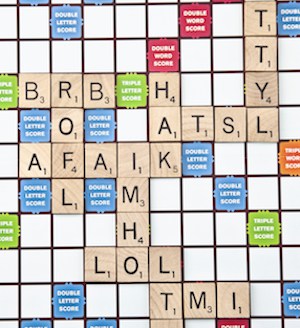Text messaging is increasingly common in the workplace. Employees use their phones during work hours for personal and business use, job recruitment firms are using SMS to reach out to candidates, and some companies even use texts to broadcast important messages to their employees. All these use cases set a new precedent for texting etiquette. So here you have them: the three basic dos and don’ts of business texting.
DO: Be careful about abbreviations
People often feel the need to abbreviate words in text messages because they are limited to 160 characters. However, not all of the ones you might use with your friends are appropriate for the workplace.

Some acceptable abbreviations include OMW, ETA, and FYI. Steer clear of abbreviations that denote slang expressions, such as “LOL,” “BRB,” or “FTW,” which are not work-appropriate.
Always better to be safe than sorry, and type the whole message if you can. Many companies have a set of acronyms that may not be familiar to everyone else, so be sure to double check who you are texting before including an abbreviation that isn’t universally recognized. (maybe include something about never abbreviating the word Thank You.)
DON’T: Send out bad news
Propriety dictates that bad news should always be given in person. This includes negative feedback and quitting your job. Sending a text message in lieu of a face-to-face conversation can burn bridges and have a detrimental effect on your career. Texting should never be a substitute for a phone call or an in-person meeting.
The exception to this rule is an emergency where information must be immediately relayed and a phone call is impractical under the circumstances.
DO: Check for autocorrect
We all know the silliness or frustration that can arise from the autocorrect feature. While most of the time the results are harmless, it is still unprofessional to send a text reading “confetti” when you meant to write “conference.” A quick once over of your text before you hit send can save face.
DON’T: Text during meetings or presentations

You wouldn’t talk over somebody else, would you? Texting during a presentation or meeting is just as rude as interrupting a person. Keep your texts relegated to outside the meeting room, and don’t think you’re fooling anyone by texting under the table either. If you must bring your phone with you into the conference room, then turn it to silent mode — even phone vibrations can be disruptive.
DO: Be friendly and polite
When you’re writing business texts it can be easy to slip into an imperative tone that comes off as brusque or cold. While you don’t want to populate your text with exclamation points and smiley faces, it doesn’t hurt to use a warm tone. A simple “please,” “thank you,” or “good morning,” can go a long way in making a good impression.
DON’T: Use emojis
They’re cute, we know. They’re also best saved for your personal texts.
Keeping your text messages professional is another way of polishing your communication skills. By following these guidelines, you can make texting in the workplace a win-win situation every time your thumbs hit the keyboard screen.
To learn more about texting in the workplace, or any other place on earth, please reach out today.
